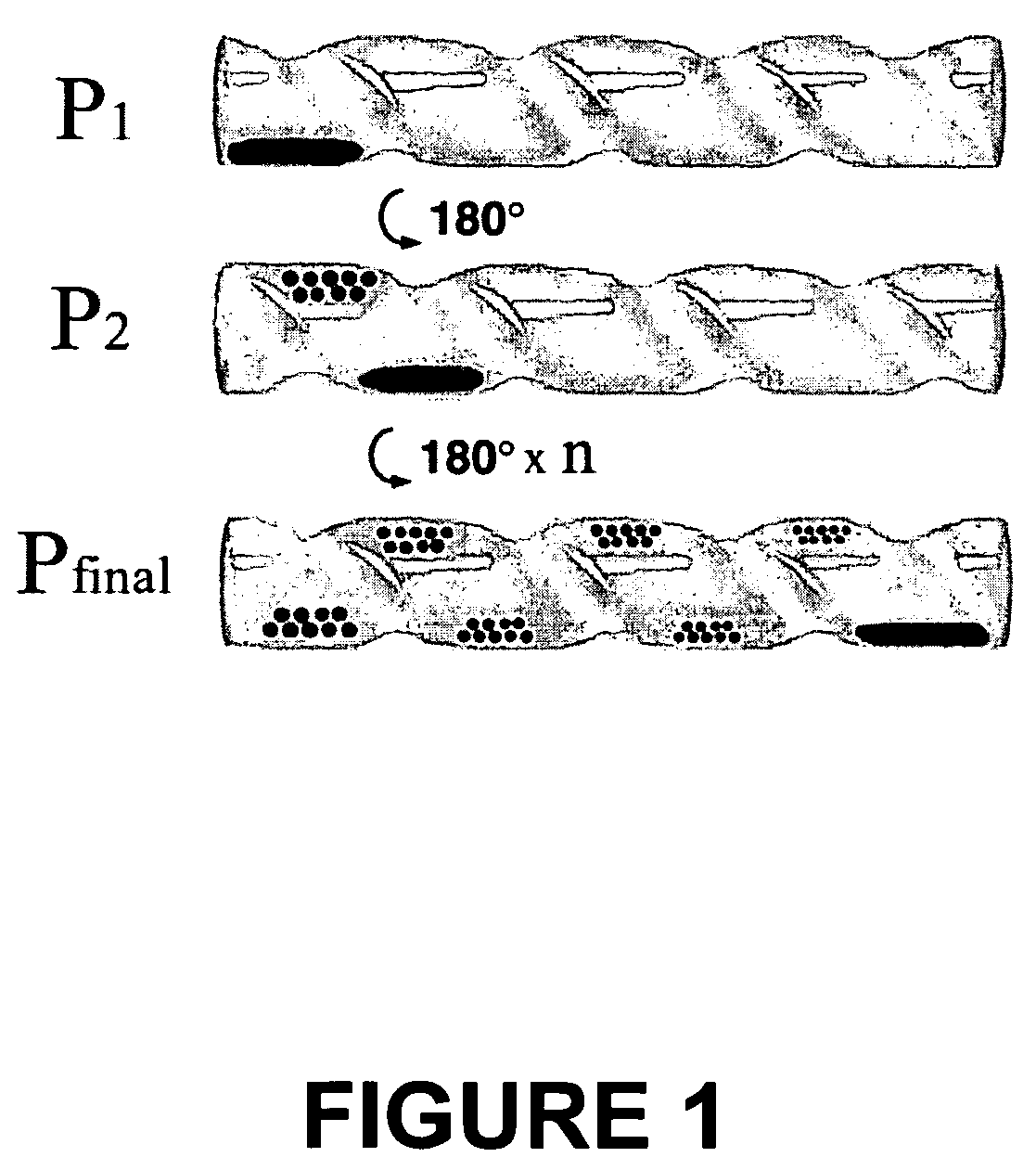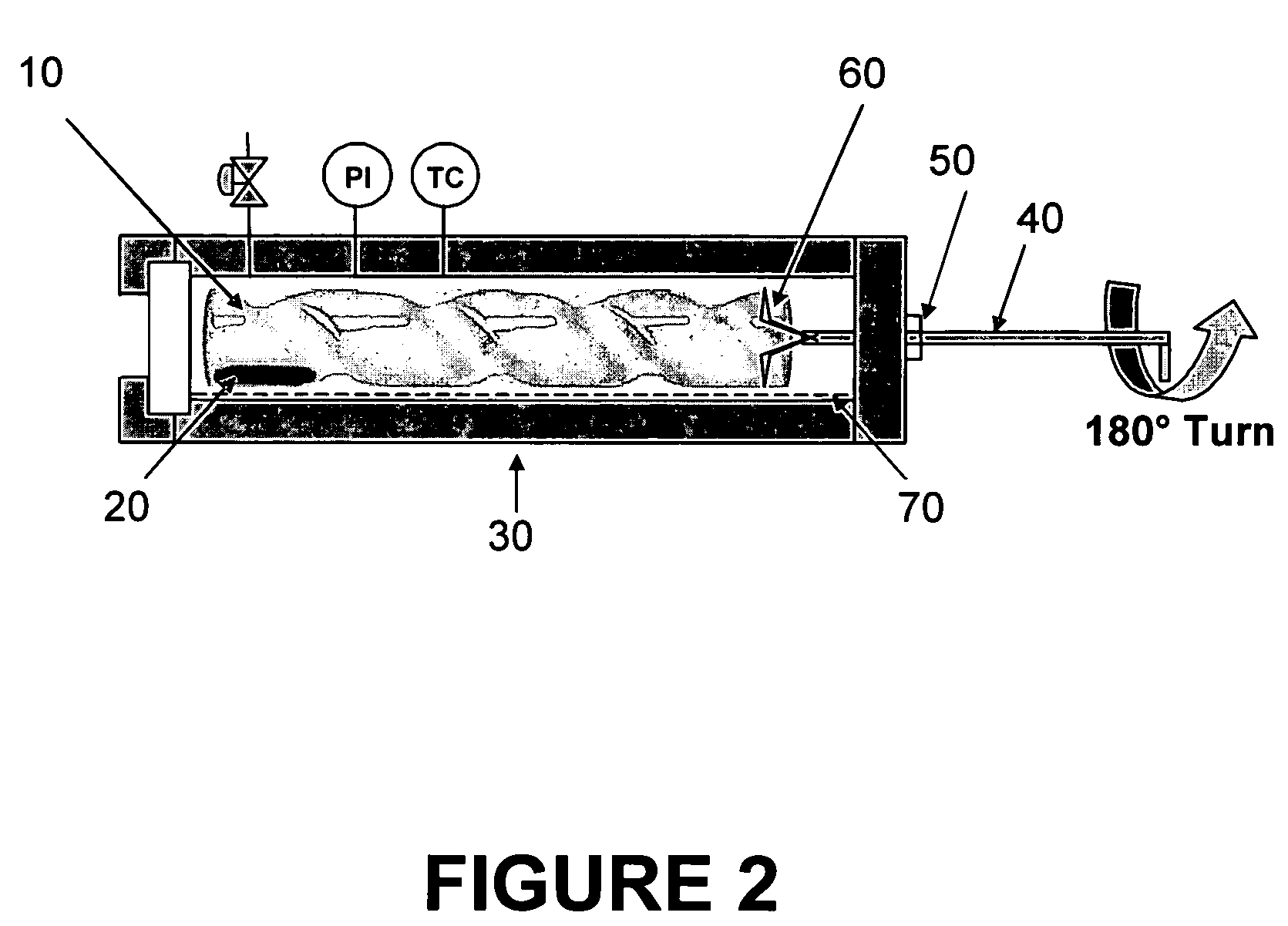Selection and deposition of nanoparticles using CO2-expanded liquids
a nanoparticle and liquid technology, applied in the direction of polycrystalline material growth, crystal growth process, coating, etc., can solve the problems of narrow particle size distribution, solvent and time-consuming whole process, and little improvement in time-consuming and solvent-intensive techniques employed for isolating monodisperse particle populations of ligand-stabilized particles, etc., to achieve simple means of tuning the nanoparticle precipitation, the effect of increasing the co2 pressur
- Summary
- Abstract
- Description
- Claims
- Application Information
AI Technical Summary
Benefits of technology
Problems solved by technology
Method used
Image
Examples
example 1
Separation of Nanoparticles
[0120]In order to achieve the physical separation of different sized particles from an initially polydisperse population, the precipitation apparatus shown in FIGS. 1 and 2 was developed which permitted GEL antisolvent tuning and localized particle precipitation. The basis of the apparatus was comprised of an open-ended glass tube fabricated to include concentric spiral grooves placed into the tube and traversing from end to end. These grooves created a spiral channel within the tube such that rotation of the tube could move the liquid / particle mixture to specific desired locations along the length of the channel. The glass tube was 12 cm long by 2 cm in diameter. The concentric spiral grooves were 6 mm deep and created a 2.5 cm wide by 6 mm deep spiral channel. The spiral tube was placed in high-pressure stainless steel cylindrical view cell sealed on one end by a quartz window and on the opposite end with a Teflon fitting. The Teflon fitting allowed a ⅛ ...
example 2
Factors Influencing Nanoparticle Size Separation Process
[0127]A detailed study was performed to examine the factors influencing the nanoparticle size separation process using CO2 as antisolvent. Variations in ligand-solvent interactions were examined to demonstrate the effects of solvent strength and thiol length on the CO2 pressure range required for particle size separation. The effect of temperature on this pressure range for precipitation was also studied. Recursive fractionation on particles collected at a given pressure range was performed to show that multiple fractionations further improve the CO2 antisolvent size separation process, just as is observed in traditional liquid antisolvent processes.
Materials
[0128]Silver nitrate (99.8% purity) (AgNO3) was obtained from Acros. Hydrogen tetrachloroaurate trihydrate (99.9%) (HAuCl4.3H2O), tetraoctylammonium bromide (98%), chloroform (99.8%), sodium borohydride (99%), dodecanethiol (98%), hexanethiol (95%), octanethiol (98.5%), tet...
example 3
Nanoparticle Film Deposition Process
Materials / Methods
[0151]Carbon dioxide was purchased from BOC Gases. Fisher deionized water was used in particle synthesis, and all other chemicals were used as supplied by Aldrich Chemical Co. Silver bis(2-ethylhexyl)sulfosuccinate, Ag(AOT), was prepared using a reported ion exchange method. Eastoe, J., Fragneto, G., Robinson, B. H., Towey, T. F., Heenan, R. K., Leng, F. J. J. Chem. Soc., Faraday Trans. 1992, 88, 461-471.
Dodecanethiol Stabilized Silver Particle Synthesis
[0152]Dodecanethiol-stabilized particles were prepared by arrested precipitation as reported previously. Sigman, et al., 2004; Brust, et al., 1994. A 36 mL aqueous solution containing 0.19 g of AgNO3 was combined with a 24.5 mL chloroform solution containing 2.7 g of the phase transfer catalyst tetraoctylammonium bromide [CH3(CH2)7]4NBr]. After stirring this mixture for 1 h, the aqueous phase was discarded and 240 μL of dodecanethiol (CH3(CH2)11SH) was added to the organic mixture ...
PUM
 Login to View More
Login to View More Abstract
Description
Claims
Application Information
 Login to View More
Login to View More - R&D
- Intellectual Property
- Life Sciences
- Materials
- Tech Scout
- Unparalleled Data Quality
- Higher Quality Content
- 60% Fewer Hallucinations
Browse by: Latest US Patents, China's latest patents, Technical Efficacy Thesaurus, Application Domain, Technology Topic, Popular Technical Reports.
© 2025 PatSnap. All rights reserved.Legal|Privacy policy|Modern Slavery Act Transparency Statement|Sitemap|About US| Contact US: help@patsnap.com



